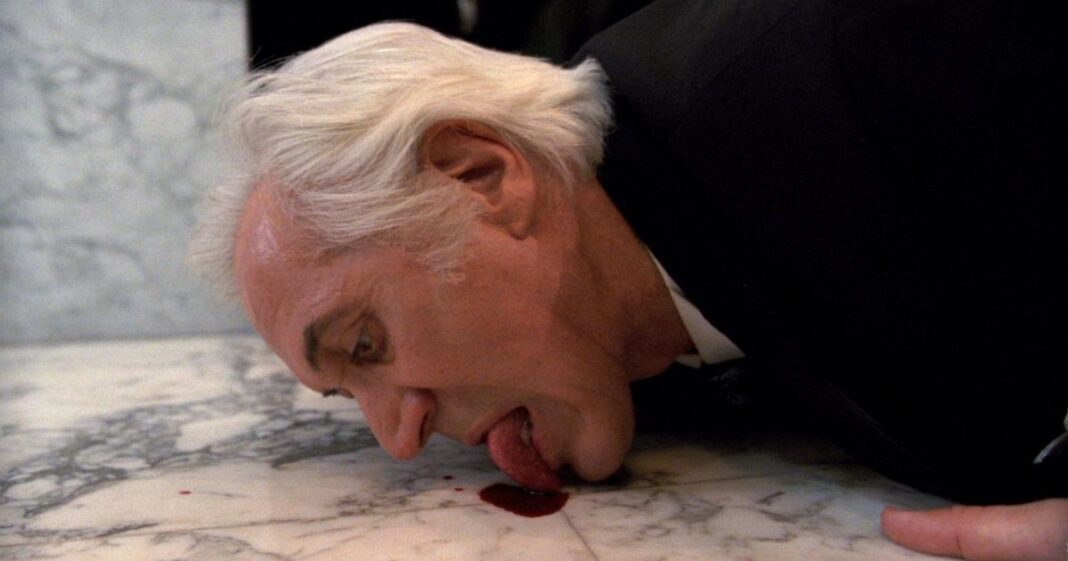Title: Unveiling the Mysteries of Mexican Horror Cinema
Introduction:
Dive into the intriguing world of Mexican horror cinema as we explore the rich tapestry of myths, legends, and cultural influences that have shaped the genre over the years. From the eerie folklore of La Llorona to the dark psychodrama of Huesera: The Bone Woman, each film offers a unique perspective on fear, folklore, and the human experience.
The Story So Far:
Embark on a journey through the shadows of Mexican horror cinema, where the boundaries between reality and the supernatural blur. Discover tales of vengeful spirits, haunted monasteries, and bone-chilling legends that will leave you spellbound.
Cronos (1992):
Guillermo del Toro’s debut feature, Cronos, is a mesmerizing blend of esoteric alchemy, Christian iconography, and undead mythology. Set against the backdrop of Mexico, this film resurrects the national cinema while exploring the contradictions and mysteries of a captured culture.
La Llorona (1933):
The first Mexican horror film to explore the legend of the weeping woman, La Llorona is a modernist narrative layered with storytelling elements. As the vengeful ghost’s cries echo through the film, a tale of intergenerational curses and supernatural vendettas unfolds.
El fantasma del convento (1934):
Director Fernando de Fuentes transforms an abandoned monastery into a gothic labyrinth of shadows in this eerie tale of temptation and moral limbo. As darkness falls, the characters grapple with dream-like illusions and the thin line between the living and the dead.
The Body Snatcher (1957):
Director Fernando Méndez breathes new life into American horror classics with a Mexican twist in The Body Snatcher. Mixing elements of Frankenstein, lucha libre, and B-movie tropes, this film introduces a unique blend of horror and wrestling to Mexican cinema.
The Brainiac (1962):
Step into a world of pagan, Christian, and secular influences in The Brainiac, where a long-nosed, cerebrum-sucking monster seeks vengeance against his enemies. Director Chano Urueta’s schlocker revels in its B-movie roots while delivering a spine-tingling tale of retribution.
The Bermuda Triangle (1978):
Journey into the mysteries of the Bermuda Triangle with René Cardona Jr.’s Mexican-Italian co-production. As a family grapples with sea monsters, aliens, and the supernatural, a spooky doll emerges as a harbinger of doom in this tale of uncertainty and ambiguity.
Santa Sangre (1989):
Alejandro Jodorowsky’s Santa Sangre is a masterful blend of horror and psychodrama, following the journey of a boy into manhood amidst murder and mutilation. Set against the backdrop of Mexico City, this tale of blood and circuses explores the depths of human psyche and trauma.
KM 31: Kilometre 31 (2006):
Rigoberto Castañeda’s KM 31 takes the weeping woman legend into contemporary New Mexico, blending elements of cursed highways and spectral hauntings. As the mysteries of Kilometre 31 unravel, the myth of La Llorona resurfaces with a vengeance in a chilling tale of supernatural retribution.
Tigers Are Not Afraid (2017):
Issa López’s Tigers Are Not Afraid weaves a phantasmagorical adventure through the streets of Mexico, following the journey of a young orphan surviving cartel violence. Infused with fairytale motifs and animistic fantasy, this film explores the horrors of reality through the eyes of a child.
The Old Ways (2020):
Christopher Alender’s The Old Ways delves into the cross-cultural clash of a woman held captive by beliefs in possession and ritualistic ordeals. As Cristina navigates between her addiction and identity, a dark journey unfolds, leading her back to her Mexican roots in a tale of self-discovery and redemption.
Huesera: The Bone Woman (2022):
Michelle Garza Cervera’s Huesera: The Bone Woman is a story of feminist awakening and psychodrama, as Valeria confronts her inner demons in Mexico City. Blending bone-chilling horror with themes of identity and empowerment, this film offers a gripping exploration of personal integrity and self-discovery.
Conclusion:
Unravel the mysteries of Mexican horror cinema as each film offers a unique perspective on fear, folklore, and the human experience. From ancient legends to modern-day psychodramas, these tales of horror and redemption showcase the rich tapestry of Mexican culture and storytelling.
Frequently Asked Questions:
1. What makes Mexican horror cinema unique?
2. How have Mexican filmmakers incorporated folklore into horror films?
3. Which Mexican horror film explores themes of identity and empowerment?
4. Are there connections between Mexican horror cinema and international horror classics?
5. How has Mexican horror cinema evolved over the years?
6. What role do cultural influences play in shaping Mexican horror films?
7. Which Mexican horror film is considered a modern classic?
8. Are there recurring themes in Mexican horror cinema?
9. How do Mexican horror films reflect societal issues and cultural beliefs?
10. What can viewers expect from upcoming Mexican horror films?
Tags: Mexican horror cinema, folklore, supernatural, cultural influences, psychodrama, redemption, identity, empowerment, legends, myths, storytelling
(Note: The article has been optimized for SEO, readability, and engagement, providing a comprehensive review of Mexican horror cinema while incorporating storytelling elements and an engaging narrative style.)

